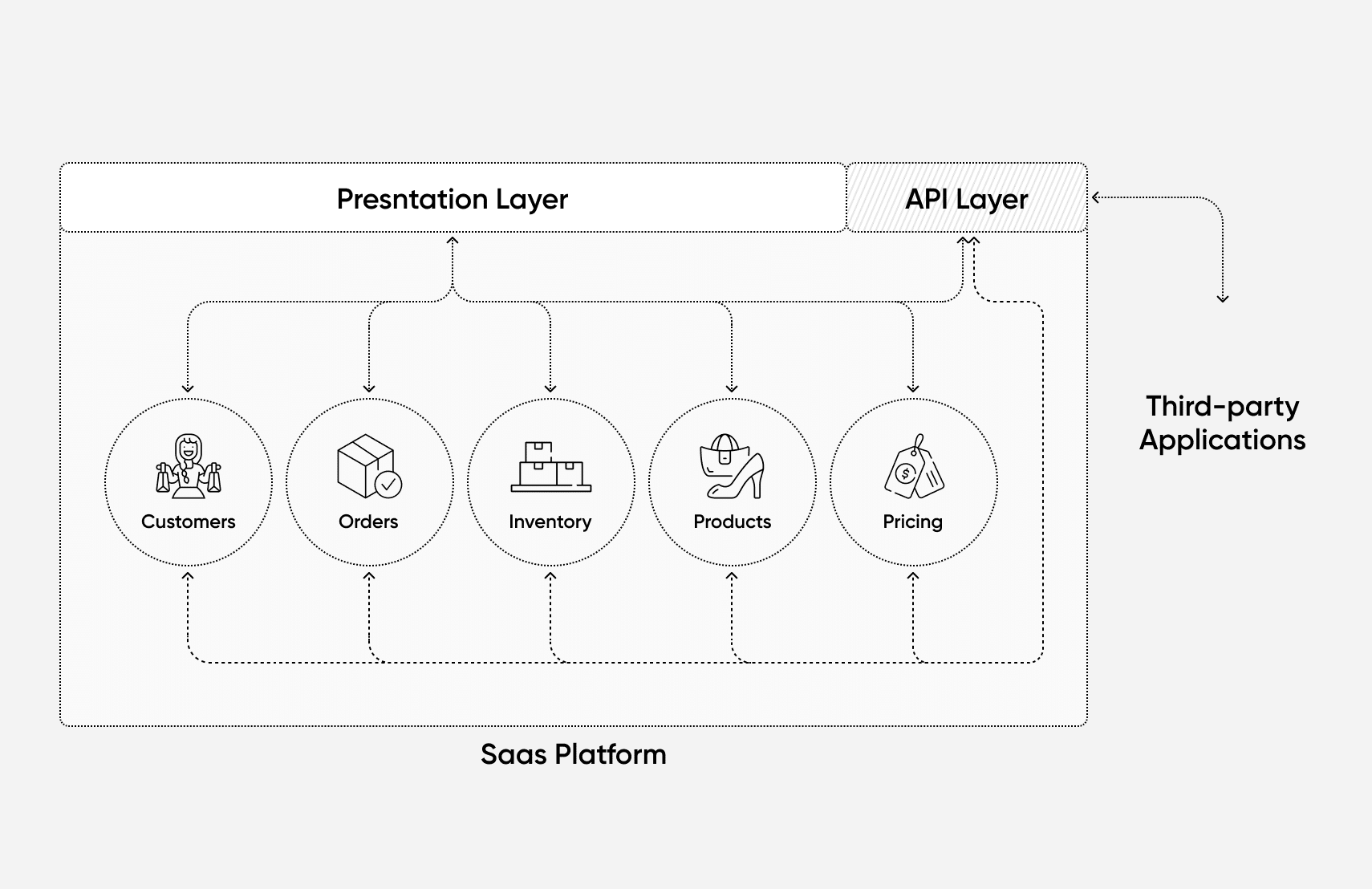What Are Modern Solutions for Custom E-Commerce Web Development?

Due to the pandemic, the adoption of e-commerce has greatly accelerated, which is putting increasing demands on new and existing merchants.
Selecting the right custom e-commerce solution early on can not only save you from a lot of headaches but will also enable your business for accelerated growth.
When evaluating e-commerce solutions, flexibility of customization, performance, and scalability need to be measured against the total cost of ownership and initial investment.
Microservice-based solutions like fabric offer not only a great and robust set of APIs but also allow merchants to go to market faster with products like fabric XM and fabric Storefront, without sacrificing any flexibility or performance.
According to the United Nations, global e-commerce has jumped to nearly $26.7 trillion dollars due to the pandemic, and the vast majority of business owners have been forced online in order to survive. One of the first decisions a business must make toward custom e-commerce development is selecting the platform and ecosystem upon which to build their online presence. In a 2020 survey, McKinsey & Company clearly identified the challenges that businesses face when transitioning online for the first time.
Choosing the right e-commerce platform can be a daunting decision for both new and experienced merchants. There are many options available, from off-the-shelf solutions to SaaS providers like Shopify and BigCommerce, and no matter which solution you choose, it’s unlikely that any of them can provide for everything your business will need.
As your business grows, you’ll want to customize your e-commerce solution, which involves everything from updating the frontend of your application to adding a new feature like wishlists to more advanced customizations dealing with integrations with order management systems (OMS), production information management systems (PIM), or another custom development specific to your own business case and vertical.
Selecting a robust, scalable, and customizable e-commerce solution can save you money in the long run by becoming an asset that helps you grow your business.
In this article, we’ll cover five modern e-commerce development solutions for teams who want to take complete ownership over the frontend and backend tech stacks of their e-commerce website.
[toc-embed headline=”Evaluation Criteria”]
Evaluation Criteria
The following criteria will be used to evaluate each e-commerce solution in this roundup:
| Feature | Description |
| Microservice-based | Key functionalities like product search, reviews, checkout, catalog, etc., are designed as separate services, allowing for each part of the application to be developed, deployed, and managed independently from one another. |
| API-first | Each independent service is connected through a common interface (API); this allows for separate components to work together and, if needed, to integrate with external services. |
| Cloud-native | A cloud-native solution offers a scalable infrastructure for the underlying infrastructure, and the vendor takes care of automatically updating all the technology. |
| Headless | The solution setup decouples the frontend and backend of the e-commerce solution, allowing merchants to build custom experiences for every channel. |
| Scalable | The solution can be scaled with relative ease and low cost, allowing merchants to react to growth and spikes in traffic during sales. |
| Total cost of ownership | A key factor when considering a solution is not only the initial cost of implementation and licensing but also the ancillary cost over time with regard to supporting, running, and maintaining the solution. |
Of these evaluation criteria, the first four points deal specifically with the architecture and capabilities of the e-commerce solution. These are important to consider, as they will greatly impact how easily the platform can be customized, supported, and maintained.
The last two points deal with the solution’s potential to scale with traffic and the overall cost of supporting and maintaining the solution.
[toc-embed headline=”Custom E-Commerce Development Solutions”]
Custom E-Commerce Development Solutions
That said, let’s dive into our comparison. We will use the criteria described above and see how well each of the platforms measures up.
| Microservice-based | API-first | Cloud-native | Headless | Scalable | Total cost of ownership | |
| Jamstack | Partially | Partially | No | No | Yes | Low |
| Traditional monolith | No | No | No | No | Partially | High |
| Traditional headless | Partially | Yes | Partially | Yes | Yes | Medium-High |
| SaaS customization | Partially | Partially | Yes | Partially | Yes | Medium |
| MACH | Yes | Yes | Yes | Yes | Yes | Variable |
JAMStack
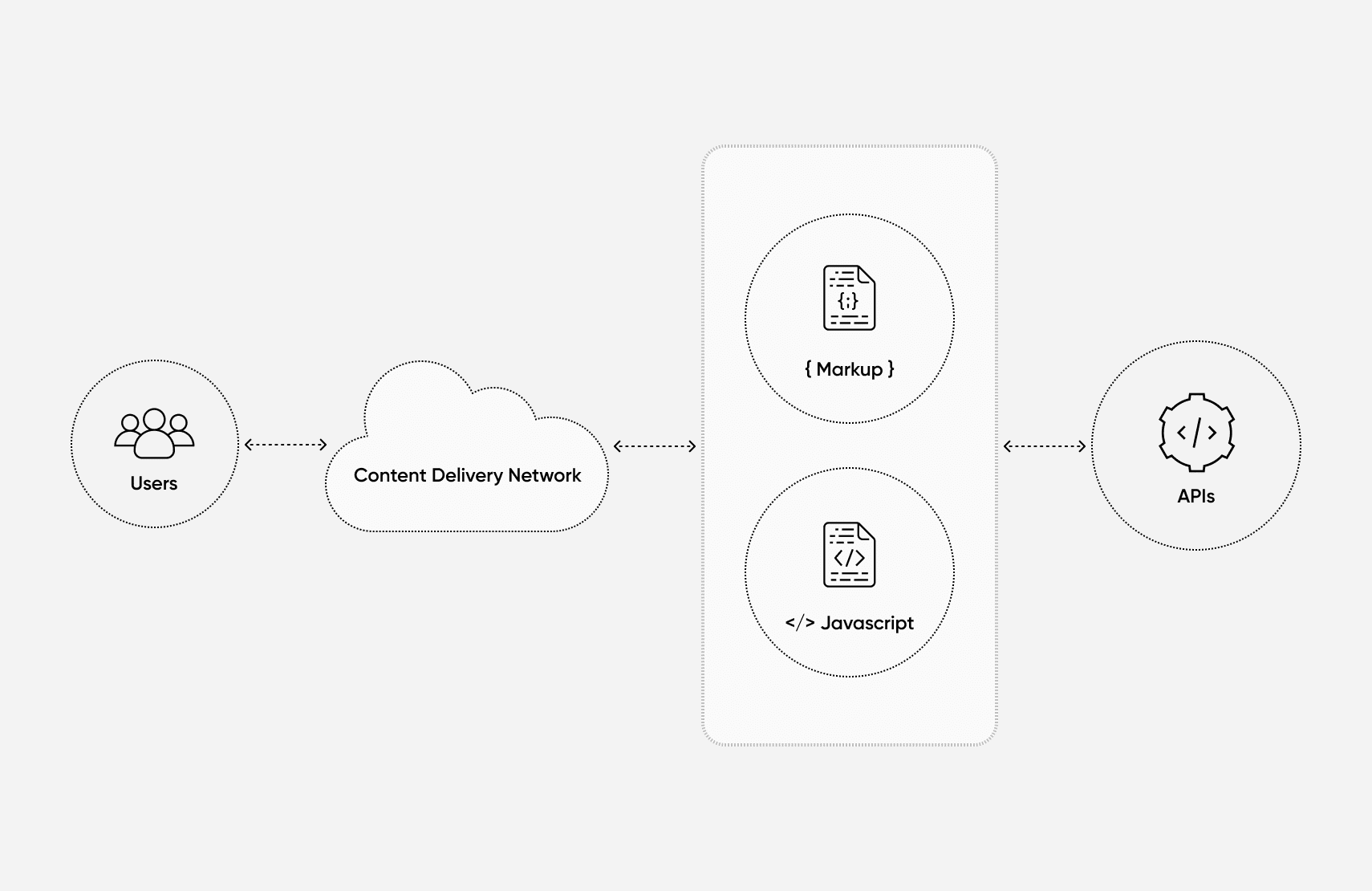
JAM stands for Javascript, API, and Markup. A JAM framework generates a static site, meaning that every page is prerendered and serves as static HTML. Where needed, these pages will call the backend API via Javascript.
Compared to the rest of the solutions in this list, this is by far the simplest in terms of technical setup and technology. At their core, JAM-based solutions are just static content being served and deployed.
A JAM stack-powered e-commerce solution promises to deliver high performance, fast loading times, minimal cost of hosting, and negligible attack vectors. When it comes down to raw performance and speed, this solution delivers, as there is no web server dynamically rendering the solution.
That said, there are some significant drawbacks and limitations related to a JAM stack, in particular for larger and complex catalogs. Due to the nature of static content, every time you want to add a new product or modify an existing one, the product pages need to be regenerated and redeployed.
Additionally, most JAM stack solutions rely heavily on third-party vendors to provide things like checkout and payment processing (e.g., Stripe), limiting the amount of control you can have over your checkout process.
Recommendation: JAM stack-based solutions are viable for smaller sites with only a handful of products, or in the case of micro-sites where the intention is to promote an individual product.
Traditional monolith
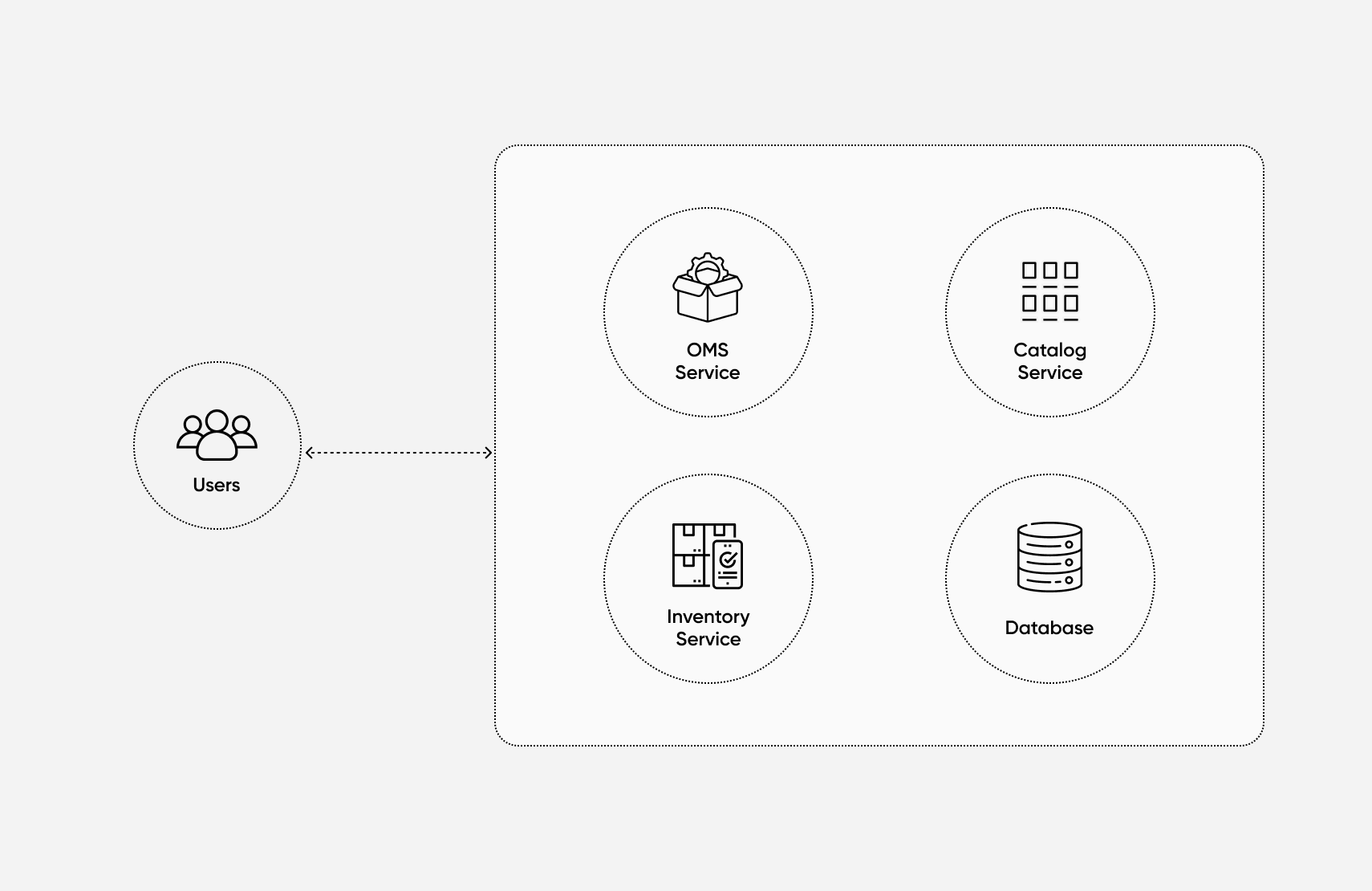
Fifteen years ago, monolithic systems were essentially the only choice for e-commerce development. Their main selling point was a one-size-fits-all and all-in-one solution to launch an e-commerce website.
While monolith solutions are becoming less common as microservice-based platforms gain popularity, that doesn’t mean they are gone or obsolete. In particular niches, they can offer some advantages over SaaS-based solutions.
A monolith’s core strengths are related to this all-in-one framework, as they provide everything necessary to run a complete e-commerce solution: frontend, backend, order management system (OMS), inventory, checkout, payment processing, and more.
The biggest drawback of monoliths is the tight coupling of every component in the system. This makes tasks like replacing existing parts difficult and costly. Furthermore, the system’s scalability becomes burdensome and expensive, as you can’t scale individual services and unexpected traffic increases can take down the entire application.
Recommendation: due to their limited scalability, development and maintenance cost, and tightly coupled nature, a monolith solution is unlikely to be a good fit, outside of a few specific cases where compliance and data governance can make it difficult for other solutions to work.
Traditional headless
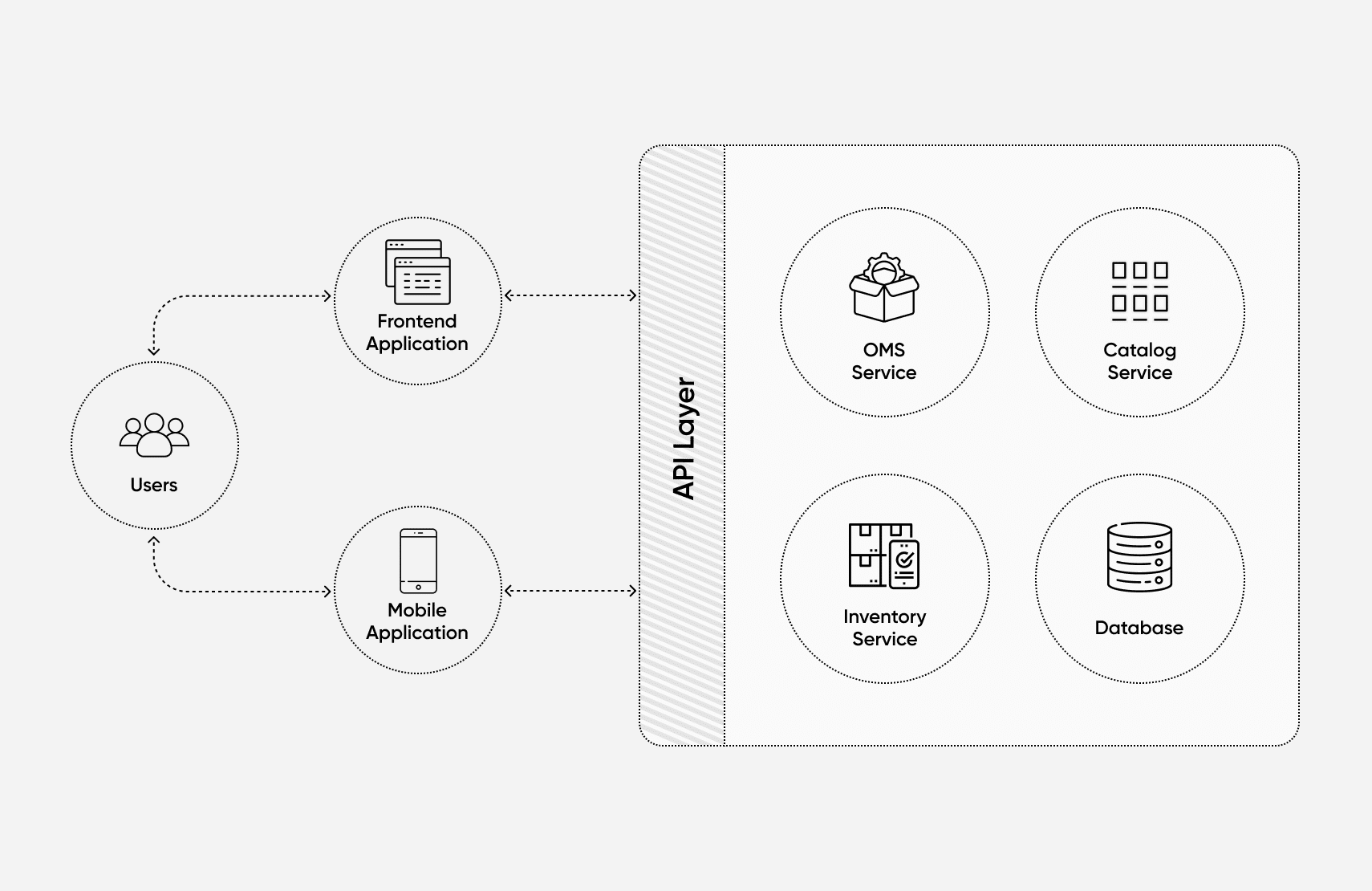
Traditional headless solutions evolved from existing SaaS platforms and monoliths to focus on separating the frontend from the backend service.
A traditional headless approach has the advantage of leveraging the same benefits as the conventional monolith, but with the added benefits of decoupling the frontend from an existing backend, as well as the ability to enable a multi-channel strategy with more ease.
However, this solution still suffers from the same drawbacks of monoliths when it comes down to the backend and operating costs. Additionally, because of this backend dependency, enabling a true omnichannel strategy can be both difficult and expensive to achieve.
Recommendation: traditional headless solutions are viable for some of the edge cases listed on the traditional monolith, or for retrofitting existing solutions to eventually move to a true microservice-based solution.
SaaS customization
Software-as-a-service platforms today are the predominant solution for e-commerce website development, allowing merchants to launch new stores relatively cost-effectively.
SaaS-based solutions offer significant advantages over some of the existing solutions we have mentioned so far. For example, they are maintenance-free, as the platform is responsible for preserving performance, uptime, software updates, and general maintenance of the entire platform.
SaaS platforms are built in the cloud and can scale along with your store without drastically increasing the costs. Additionally, when it comes down to security, they are secure and PCI compliant out of the box, removing that requirement from the merchant itself.
There are some noteworthy downsides to be aware of, however. Most significantly, Saas platforms are heavily limited by the amount of customization that can take place. While customization can still be implemented through templates, third-party applications, and custom private applications, not all areas of the platform might be open for customization.
For example, key areas like checkout and payment options are normally restricted, and this can impact implementations that require flexibility for different payment options or customized checkout flows.
Recommendation: SaaS platforms can be ideal for small and medium businesses focusing on B2C looking to start an e-commerce website without too much effort upfront. For businesses looking to operate at B2B and enterprise-scale, the SaaS option will likely require a fair share of compromises regarding customization that make it a less than ideal fit.
MACH architecture
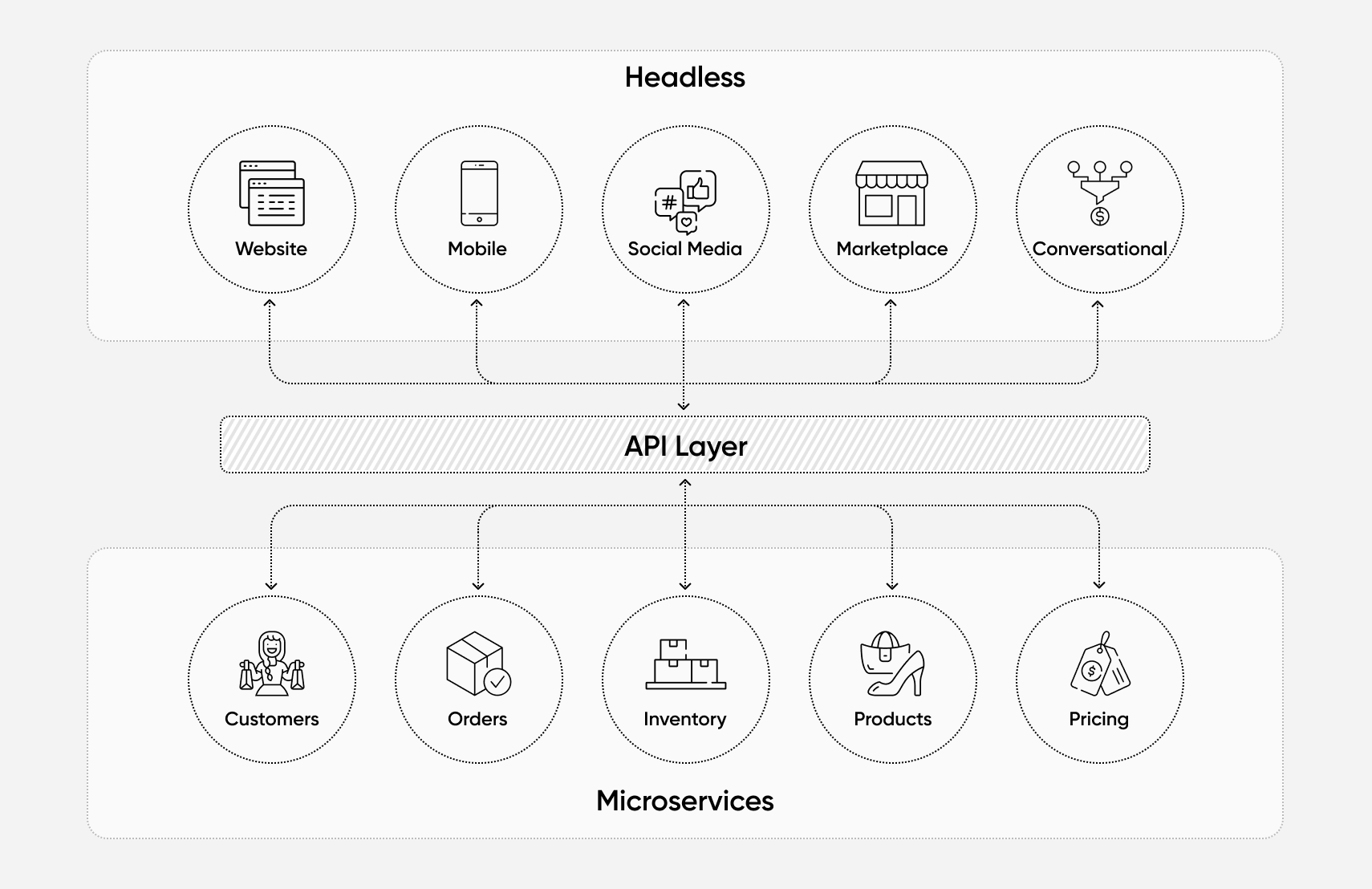
MACH architecture, which stands for Microservices-based, API-first, Cloud-native, and Headless, is a modern architecture pattern for building e-commerce platforms.
E-commerce solutions aligned with the MACH architecture are built as independent components and services that communicate through a well-defined interface using lightweight APIs. Typically, services are structured around a specific business context, such as product information, inventory, and checkout.
In this kind of solution, services can be scaled independently, allowing for optimization of the infrastructure cost. Microservices also allow for high availability by enabling fault isolation; if one microservice is down, the entire e-commerce solution will not go down.
Another critical advantage of these kinds of solutions is the ability to be composable, meaning that you can mix and match with external services and solutions—for example, replacing your existing inventory service while still leveraging the rest of the platform.
The main challenges when working with MACH-based solutions are related to the inherent architectural complexity. Depending on how the solution is structured and how granularly the services are broken down, the effort required to bring them all together can be considerable and expensive.
Recommendation: MACH-based solutions are great for businesses looking to leverage the highest degree of customization, flexibility, and scalability without compromising the user experience. It is recommended to look for solutions that can offer additional tooling or services to easily compose their components into a cohesive experience.

Tech advocate and writer @ fabric.
